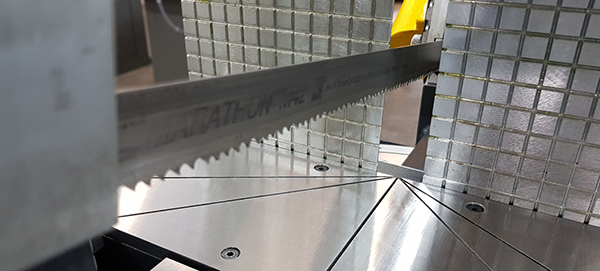According to Bison Machinery, it would be easy to assume that capacity is the deciding factor when selecting a bandsaw, however, with applications varying from the mitre cutting of small box sections and angles, to cutting solid bar stock in exotic materials, it is essential that other machine features are also assessed when looking to cut structural sections.

For instance, unlike older models, most bandsaws now mitre by moving the head, otherwise known as the bow or saw frame, rather than turning the clamps and rotating the material. Smaller saws are often single mitre, as it is quicker to turn the material over, than to reset the saw frame to make a mitre cut in the other direction. However, when working with larger beams, it is essential that the saw frame can be angled in both directions to perform opposite mitres.
In terms of vice design, hydraulic clamping is desirable when cutting larger and heavier beams as it requires a lot of force to pull a beam back in line with the machine. Additionally, machines designed specifically for structural applications will often have a longer bow to permit a full width cut at a suitable height for standard beam sizes, while still allowing the cutting of larger box sections.
Except for the very largest examples, the majority of structural sections are cut on pivot bandsaws. When cutting with a pivot saw, the centre of gravity of the bow shifts as it descends, causing it to speed up or slow down at different stages of the cut. To counter this effect, one or more springs are fitted at the back of the bow, although models such as the Sterling SRA440 DGSA feature a hydraulic counterbalance system which is synchronised with the main down-feed cylinder; this gives a more consistent down-feed rate, resulting in better blade life.
Further factors cited as important by Bison Machinery include digital mitre angle scales, and feed pressure adjustment capability.
For further information www.bisonmachinery.co.uk















